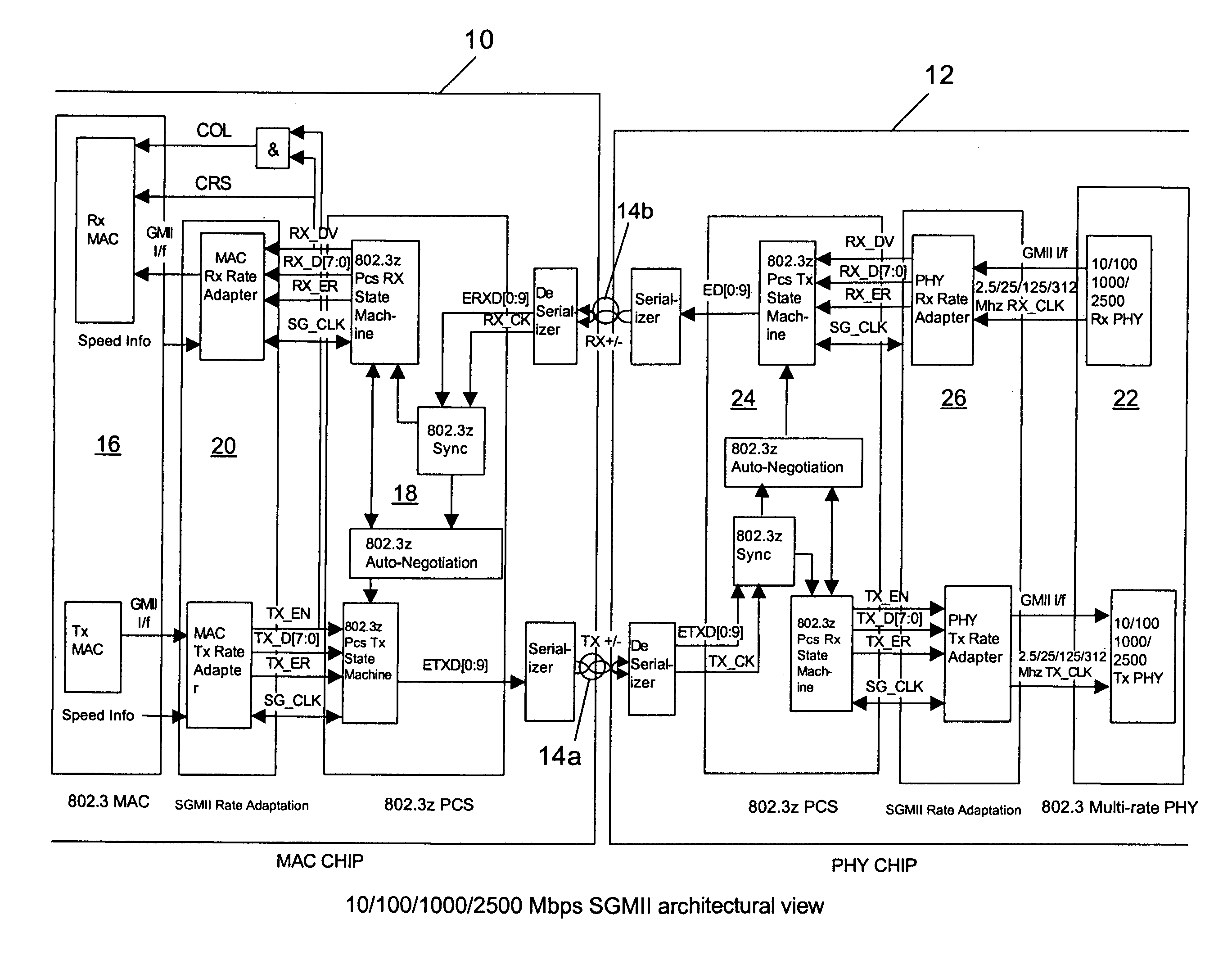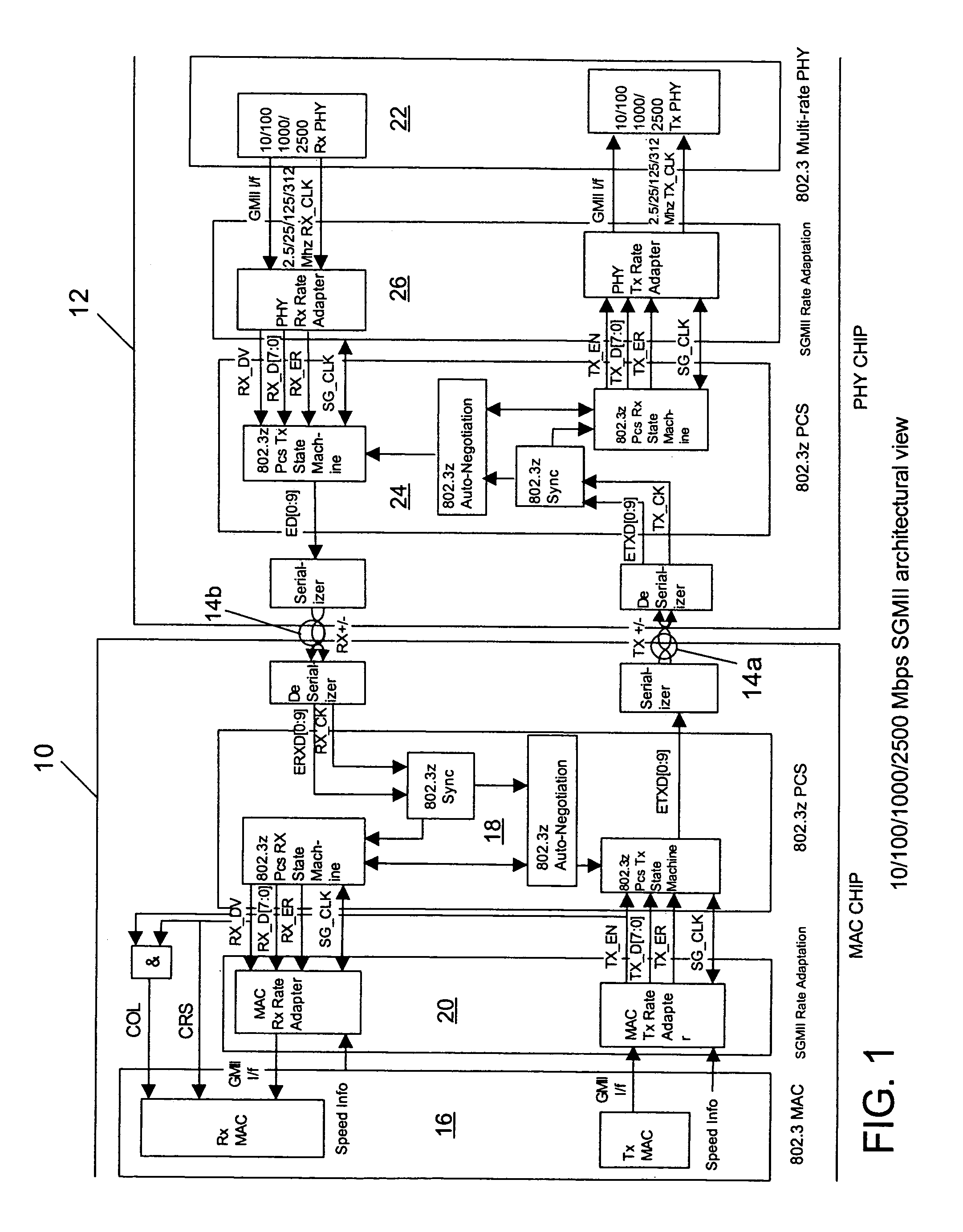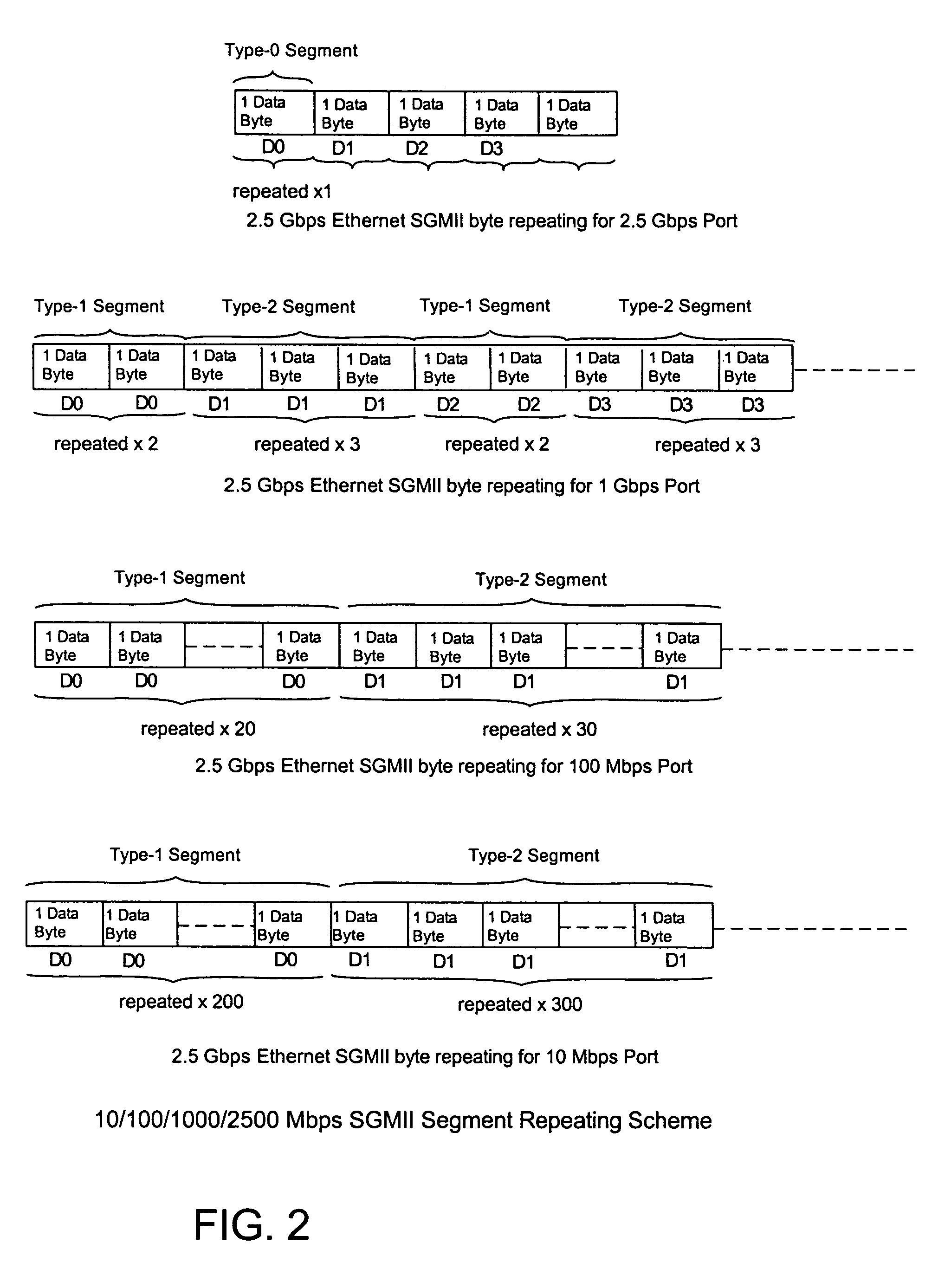10/100/1000/2500 Mbps serial media independent interface (SGMII)
a serial media independent, 10/100/1000/2500 mbps technology, applied in the direction of digital transmission, data switching network, electrical equipment, etc., can solve the problems of increasing the cost and size of components and wiring, and going to 10 gbps is very expensiv
- Summary
- Abstract
- Description
- Claims
- Application Information
AI Technical Summary
Problems solved by technology
Method used
Image
Examples
first embodiment
[0031]In the invention, the SGMII Rate Adaptation block of FIG. 1 utilizes differently sized frame extender blocks and a special data sampling mechanism to reduce the data rate by a factor of 2.5, 25, and 250 for networks having data transmission rates of 1000, 100, and 10 Mbps respectively. A detailed description of this mechanism follows with reference to FIGS. 2, 3, and 4.
[0032]In this embodiment, the run SGMII MAC is run at a 312.5 Mhz (3.125 Gbaud serial line) base frequency. Since 2.5 Gbps is 2.5 times the base 1 Gbps data transfer rate the bytes in segments can not be repeated 2.5 times, since 2.5 is not an integer multiplier. In order to solve this problem, this embodiment utilizes three types of byte repeating segments as depicted in FIG. 2.
[0033]The Type-0 byte repeating segment, depicted at the top of FIG. 2, only repeats each frame data byte once and is used only for 2.5 Gbps operation. A Type-I segment repeats a frame data byte 2 times for 1 Gbps data transfer, 20 times...
second embodiment
[0042]the invention will now be describe with reference to FIG. 4. In this embodiment two separate clock signals are supplied to the MAC and the PHY depending whether the nominal data transfer rate is 2500 Mbps or 10 / 100 / 1000 Mbps. As described above, the standard components for 1 GE will operate at 2.5 Gbps and the standard SGMII interface is designed to extend frames so that it is compatible with 10 or 100 as well 1000 Mbps Ethernet. Accordingly, a first clock signal at 125 MHz is provided to operate at 10 / 100 / 1000 Mbps Ethernet. A second clock signal at 312.5 MHz is provided to operate at 2.5 GE.
[0043]FIG. 4 is a block diagram of this embodiment. First and second clock inputs are coupled to a selector block 40 having an output coupled to the clock inputs of a MAC block 42 and a PHY block 44. As described above for 10 / 100 / 1000 Mbps Ethernet the first clock signal at 125 MHz is selected and for 2.5 GE the second clock signal at 312.5 MHz is selected.
PUM
 Login to View More
Login to View More Abstract
Description
Claims
Application Information
 Login to View More
Login to View More - R&D
- Intellectual Property
- Life Sciences
- Materials
- Tech Scout
- Unparalleled Data Quality
- Higher Quality Content
- 60% Fewer Hallucinations
Browse by: Latest US Patents, China's latest patents, Technical Efficacy Thesaurus, Application Domain, Technology Topic, Popular Technical Reports.
© 2025 PatSnap. All rights reserved.Legal|Privacy policy|Modern Slavery Act Transparency Statement|Sitemap|About US| Contact US: help@patsnap.com



